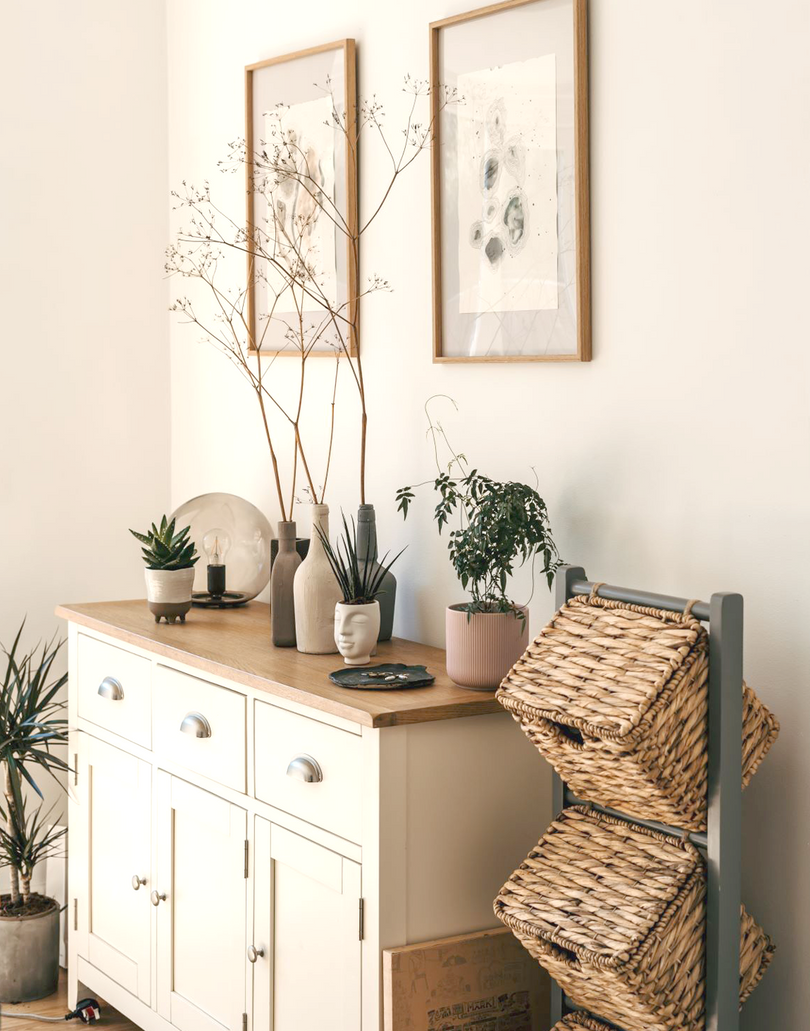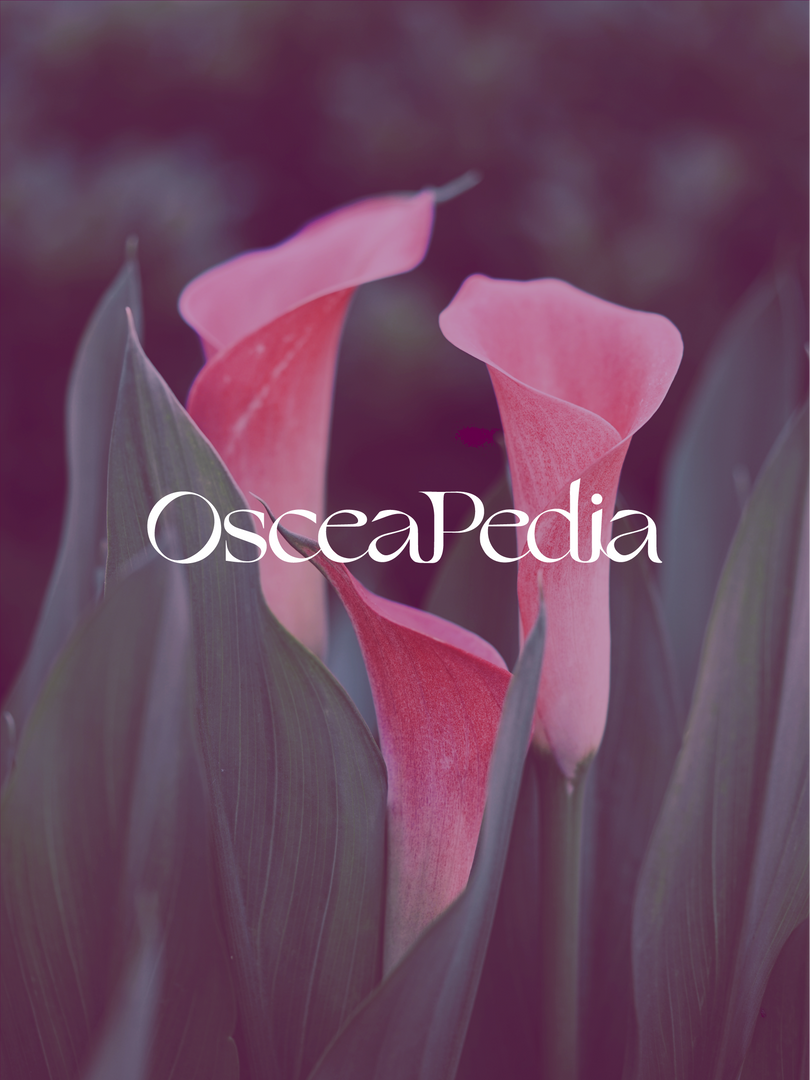Whether you are just starting your plant journey or are a veteran plant parent, seeking out air-purifying houseplants is a great way to spruce up your home while improving air quality.
This article with cover:
- Chemicals lurking Inside our homes
- The NASA Clean Air Study
- How do you pick the right houseplant?
- Where can you buy the best houseplants?
- 5 best air-purifying houseplants
Chemicals Lurking Inside Our Homes
According to the EPA, the indoor air in our homes can have three to five times more pollutants than the air outside! For city dwellers, living in an energy-efficient, modern building can have unintended side effects such as decreased airflow. Lack of airflow creates an environment where indoor air pollution, such as dust, can build up and cause health issues. You could be living in a “sick” house and not realize it. Chemicals like xylene (in paint and lacquers), benzene (furniture wax, insect sprays) trichloroethylene (cleaners, adhesives), and formaldehyde (upholstery, air fresheners, and paint) can produce symptoms like headaches, sore throats, and respiratory issues. In a recent study, 100% of indoor air and floor dust tested positive for phthalates. Phthalates are a family of industrial chemicals used as solvents in various consumer products as well as softeners in plastics. They are known to damage various organs in the body and especially wreak havoc on the endocrine system controlling our hormones & fertility. Modern furniture and synthetic building materials carry more harmful chemicals than you may have expected.
The NASA Clean Air Study
In 1989, NASA conducted an experiment titled ‘The NASA Clean Air Study’ to investigate the potential purifying quality of plants in response to “sick building syndrome.” The two-year study involved placing a collection of plants in a sealed air chamber and exposing them to high concentrations of chemicals. Benzene, formaldehyde, and trichloroethylene were tested. Then, the researchers documented the percentage of the chemical that had been removed from the sealed space after 24 hours. The NASA Clean Air Study concluded that in addition to absorbing carbon dioxide and releasing oxygen through photosynthesis, certain indoor plants can act as a natural air filter to remove volatile organic air pollutants. NASA determined a list of 18 top plants that are the most effective at naturally filtering out indoor air pollution. All of the houseplants recommended below are in this top 18 list from the 1989 study. Since NASA’s original release, further research has been done which reaffirms these initial findings that specific plants can act as effective air-purifiers.
How Do You Pick The Right Houseplant?
If you are just starting your plant parent journey, it can be daunting to know which houseplant to buy and how to care for your new plants. It is important to do research and plan before you make your purchase to ensure your plant lives a long, healthy life. Ask yourself two important questions: How bright is the location I am putting my plants? And secondly, how much time do I have to water and care for my houseplants? Once you answer those questions, you can narrow down your selection of plants that fit your environment and lifestyle. While shopping for plants, it is important to check the plants for health conditions. If it is wilting, browning, damaged, or just looks sad, the plant is already unhealthy and will have less of a chance of survival. It is also important to check for pests by looking for leaf discoloration, holes, or tiny webs. Pests tend to hide on the underside of leaves so make sure you examine the plant from every angle.
Where Can You Buy the Best Houseplants?
We recommend buying your houseplants locally and supporting your local small businesses whenever possible. Plants have a greater chance of survival if they are planted close to where they were bought since the environments are similar. Local nurseries also allow you to examine the quality of the plant in person before purchasing. Check out your local nurseries and ask the employees for plants that come from local gardeners and growers. If you don’t have time to visit your local plant shops or if you don’t have a nursery near you the following three websites are great second options to order houseplants online.
1. The Sill
The Sill started 10 years ago as a small shop in Manhattan's Lower East Side. They have since expanded to offer an extensive online shop as well as additional in-person plant shops across four states including Massachusetts, New York, Illinois, and California. The Sill is a great source for all of the popular houseplants but they lack rarer plant selections. They also have a large number of pots and faux and preserved plants from which to choose. Their website has gorgeous photography and is easy to filter and shop. In their plant care library, you can find specific care guides for all of your plants. Their quick delivery is carbon neutral certified!
2. Home Depot
An oldie, but a goodie, Home Depot offers a great selection of indoor and outdoor plants. Home Depot’s online shop offers a wide selection of plants that you wouldn’t typically see at their brick-and-mortar locations. Their website has great filters which allow you to select what zone you live in as well as plant characteristics. These filters make finding the right houseplants for your exact growing conditions, much easier. Their garden center is packed with all of your plant care needs and they offer local pickup options.
3. Plants.com
Plants.com offers a wide variety of plants suited to a variety of different needs and quick two-day shipping. Their plants are organized by care level, size, and light preference. Plant.com also has an extensive plant guide library so that you can learn more about the conditions, preferences, and common issues for each of your plants.
4. Léon & George
Leon & George offers high-quality delivery services for hand-selected plants. Their commitment to quality inspection truly sets this company apart. They source their plants from local California farmers and carefully examine each plant for quality and size. All of their plants come with beautiful handcrafted ceramic planters, sustainably sourced hardware, and detailed care instructions.
5. Bloomscape
Bloomscape is unique in its direct-greenhouse-to-customer journey. When you buy a houseplant, it typically spends a month traveling and shipping before it is placed on the nursery floor. With Bloomscape, their plants spend only 3-4 days in between their carefully monitored greenhouse and the customer's front door. This makes their plants healthy and ready to enjoy as soon as you open the box.
5 Best Air Purifying Houseplants
Now that you know where to shop, below is a list of the five best air-purifying houseplants that are effective in detoxifying your home from nasty volatile chemicals. The five we selected were all placed on NASA’s list of the top air-purifying plants. In addition, the plants we have chosen are low maintenance, easy to care for, and will live long happy plant lives proving worthy of your investment!
1. Spider Plant

Photo by: Upsplash
Care: water 2-3 times a week, keep in bright to moderate indirect sun
Eliminates: Formaldehyde and xylene
Also known as air plants, the resilient spider plants are perfect for houseplant newcomers. They grow quickly and are easy to care for. They can even survive with a little forgetfulness. These plants look great in hanging baskets and are non-toxic for children and animals. Something unique about this species is that the main plant sends out shoots, called “spiderettes” that flower and eventually grow into baby spider plants that you can transplant. NASA’s study found that spider plants removed 95 percent of formaldehyde from a sealed plexiglass chamber in 24 hours. This would be great to place in your bedroom for maximum clean air quality while you sleep!
2. Chinese Evergreen

Photo by: Shutterstock
Care: low to medium light, likes high humidity, water once a week
Eliminates: Benzene, carbon monoxide, formaldehyde, and trichloroethylene
Another plant that’s easy to care for and detoxes your home is the Chinese Evergreen. In addition to removing common toxins, these plants are beautifully patterned and colored. This plant is slow-growing and lives to an old age of ten years. Make sure to keep this plant away from pets or young ones because it is toxic when ingested.
3. Weeping Fig

Photo by: Plants Spark Joy
Care: doesn’t like changes in the environment, needs bright indirect light, water once a week
Eliminates: Formaldehyde, xylene, and toluene
A popular houseplant since Victorian times, NASA concluded that weeping figs are extremely effective in helping tackle levels of formaldehyde, xylene, and toluene. Make sure to keep this plant out of direct sunlight and it will be a trusted purifier for many years to come.
4. Devil’s Ivy

Photo by: Upsplash
Care: Water when soil is dry, trim occasionally, enjoys light but not direct sunlight
Eliminates: Formaldehyde, xylene, toluene, benzene, and carbon monoxide
Also known as golden pothos, this plant is practically indestructible. It is lush, hardy, and inexpensive. Devil’s Ivy thrives in a variety of environments and can grow up to 8 feet long and in a variety of directions! In a hanging basket, it will trail downwards. Place it near a trellis and train it to climb. Or simply place it in a pot on a coffee table and let it grow horizontally. Devil’s Ivy is considered one of the most effective indoor air purifiers.
5. Boston Fern

Photo by: Gardening Know How
Care: Place in a bathroom or places of high humidity, low light, water often to keep soil
moist
Eliminates: Xylene and formaldehyde
The NASA study revealed that the Boston Fern was the top house plant for removing formaldehyde. Since these plants are native to tropical forests and swamp areas, they will thrive in high humidity. Placing your Boston Fern in your bathroom is ideal since the moisture from showers will hydrate the plant.
It is important to note that while the NASA studies were conducted in a lab when air quality studies were replicated in a house or apartment it concluded that you would need 10 plants per square foot to fully purify filthy air. While no one is able to plant a personal forest in their home to achieve air quality perfection, slowly adding a collection of plants in key rooms that emit more toxins is a great place to start. Don’t forget to open your windows, vacuum, and dust regularly to aid in the purification process. Your body will thank you for it.
Sources:
https://www.thehealthy.com/home/plants-to-detoxify-your-home/
https://archive.org/details/nasa_techdoc_19930072988/page/n11/mode/2up
https://www.designboom.com/technology/nasa-clean-air-study-plants-natural-filter-06-13-2021/
https://www.healthline.com/health/air-purifying-plants#benefits-of-plants
https://mycityplants.com/blogs/plant-journal/how-to-choose-the-best-plants-for-your-home
https://www.dossierblog.com/a-beginners-guide-to-buying-house-plants/
https://www.thespruce.com/best-places-to-buy-plants-online-4588886
https://www.nationalgeographic.com/science/article/houseplants-dont-purify-indoor-air
https://pubs.acs.org/doi/10.1021/acs.est.0c00229?goto=supporting-info
https://noharm-uscanada.org/issues/us-canada/phthalates-and-dehp










